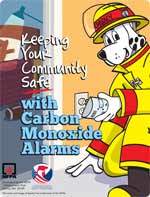|
| 2025 Incidents |
| Month | Fire | Rescue | Total |
| Jan | 33 | 109 | 142 |
| Feb | 29 | 80 | 109 |
| March | 39 | 90 | 129 |
| April | | | |
| May | | | |
| June | | | |
| July | | | |
| Aug | | | |
| Sept | | | |
| Oct | | | |
| Nov | | | |
| Dec | | | |
| Total | 101 | 279 | 380 |
| 2024 Incidents |
| Month | Fire | Rescue | Total |
| Jan | 30 | 85 | 115 |
| Feb | 23 | 81 | 104 |
| March | 28 | 93 | 121 |
| April | 21 | 102 | 123 |
| May | 19 | 122 | 141 |
| June | 30 | 109 | 139 |
| July | 33 | 78 | 111 |
| Aug | 34 | 107 | 141 |
| Sept | 43 | 79 | 119 |
| Oct | 43 | 106 | 149 |
| Nov | 28 | 88 | 116 |
| Dec | 38 | 105 | 143 |
| Total | 370 | 1155 | 1522 |
| Past Incidents |
| Year | Fire | Rescue | Total |
| 2012 | 372 | 717 | 1,089 |
| 2013 | 337 | 735 | 1,072 |
| 2014 | 293 | 747 | 1,040 |
| 2015 | 321 | 700 | 1,021 |
| 2016 | 305 | 757 | 1,062 |
| 2017 | 304 | 787 | 1,091 |
| 2018 | 300 | 915 | 1,215 |
| 2019 | 289 | 927 | 1,216 |
| 2020 | 311 | 917 | 1228 |
| 2021 | 304 | 1085 | 1389 |
| 2022 | 344 | 1208 | 1551 |
| 2023 | 335 | 1060 | 1395 |
| Web Counters |
Website Visitors
Since
February 6, 2017
|
Visitors Today
Apr 25, 2025
|
|
|
|
Smoke Alarms 
Smoke alarms save lives. Smoke alarms that are properly installed and maintained play a vital role in reducing fire deaths and injuries. If there is a fire in your home, smoke spreads fast and you need smoke alarms to give you time to get out.
Here's what you need to know!
- A closed door may slow the spread of smoke, heat and fire. Install smoke alarms in every sleeping room and outside each separate sleeping area. Install alarms on every level of the home.
- Smoke alarms should be interconnected. When one sounds, they all sound.
- Large homes may need extra smoke alarms.
- Test your smoke alarms at least once a month. Press the test button to be sure the alarm is working.
- There are two kinds of alarms. Ionization smoke alarms are quicker to warn about flaming fires. Photoelectric alarms are quicker to warn about smoldering fires. It is best to use of both types of alarms in the home.
- When a smoke alarm sounds, get outside and stay outside.
- Replace all smoke alarms in your home every 10 years.
- More about installation and maintenance of home smoke alarms.
- Tip Sheet on smoke alarms.
Carbon Monoxide Alarms
Although the popularity of carbon monoxide (CO) alarms has been growing in recent years, it cannot be assumed that everyone is familiar with the hazards of carbon monoxide poisoning in the home.
Often called the invisible killer, carbon monoxide is an odorless, colorless gas created when fuels (such as gasoline, wood, coal, natural gas, propane, oil, and methane) burn incompletely. In the home, heating and cooking equipment that burn fuel are potential sources of carbon monoxide. Vehicles or generators running in an attached garage can also produce dangerous levels of carbon monoxide.
|
|
|

